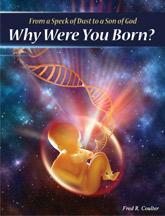Almost from its inception, the Bible develops its narratives, teachings and prophecies around the preeminent role of Jesus of Nazareth— the Messiah of God. In a veiled reference, the Scriptures first reveal the role of the Messiah in Genesis 3:14-15, as God is meting out judgment on the serpent, Satan the devil. “Because you have done this [in causing Adam and Eve to sin] you are cursed above all livestock, and above every animal of the field. You shall go upon your belly, and you shall eat dust all the days of your life. And I will put enmity between you [Satan] and the woman [the church], and between your seed [those who would do Satan’s bidding] and her Seed [Jesus]; He [Jesus] will bruise your head [overcome and defeat you], and you shall bruise His heel [cause Him to be put to death].” Thus, from the beginning, we see foreshadowed in a single sentence the redemptive work of Christ crucified and the ultimate salvation wrought by His victory, as King of kings in the age to come, over the “god” of this present age (II Cor. 4:4)—truly, the Gospel message in a nutshell.
Numerous additional messianic prophecies are carefully woven throughout Scripture. The patriarch Abraham, for example, was promised that his Seed would bring blessings to all mankind. “And in your seed shall all the nations of the earth be blessed, because you have obeyed My voice” (Gen. 24:18). The apostle Paul shows clearly in Galatians 3:16 that the reference to “seed” here is messianic. Likewise, the prophet Moses told the children of Israel that God would one day raise up “a Prophet from the midst of you, of your brethren, one like me. To Him you shall hearken” (Deut. 18:15)—clearly a prophecy of Jesus Christ’s first coming as well as His final return to inaugurate the age to come.
As any Bible scholar will attest, there are literally hundreds of prophetic references in the Old Testament concerning the role of Jesus the Messiah. But what is poorly understood is this: As such prophecies find fulfillment in the New Testament, they do so in a highly organized manner—ordered according to specific “appointed times.” These “appointed times” of the Messiah range from His birth to His ministry and from His death and resurrection to His final triumphant return at the end of the age. Of primary importance, these “appointed times” are arranged according to the timeframe set by the biblical festivals and holy days—which outline God’s plan of salvation. (Unfortunately, these festivals have all but been ignored by mainstream Christianity.) In fact, the biblical feasts and high days—coordinated around three “seasons” (Lev. 23:4; Ex. 23:14-16)—form a framework or substructure that God uses to fulfill prophecy.
As will be demonstrated, God has precisely designed the role of Jesus the Messiah in accordance with the “appointed times” of His holy days. Indeed, every key event in the life and ministry of Jesus Christ— including His second coming—has been correlated to the various aspects of the Passover, the spring festival of Unleavened Bread, the late spring festival of Pentecost, and the fall festival season featuring the Day of Trumpets, the Day of Atonement and the Feast of Tabernacles (see Appendix E for an overview of God’s annual holy days).
It is the purpose of this book, The Appointed Times of Jesus the Messiah, to unveil the step-by-step fulfillment of all the major messianic prophecies as revealed by the “appointed times” of God’s holy day Master Plan. As the reader will come to see, it is only within this unique framework that the role of Jesus as the Messiah can be fully understood.—Philip Neal






